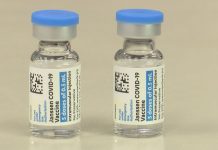
There is no safe level of alcohol, a new study concludes – upending previous guidance that low levels of consumption can be safe, and even beneficial to health.
A leading risk factor for death and disease worldwide, drinking alcohol is linked with nearly one in 10 deaths among people aged between 15 and 49 years old, according to a Global Burden of Disease (GBD) study published in medical journal The Lancet today.
“Alcohol is a colossal global health issue and small reductions in health-related harms at low levels of alcohol intake are outweighed by the increased risk of other health-related harms, including cancer,” wrote Dr Robyn Burton of King’s College London, in a commentary.
Having one alcoholic drink a day, containing 10 grams of pure alcohol (an average 100ml glass of wine, half a pint of beer, or 30ml of spirits, for example) increases the risk of developing a range of illnesses including cancer, diabetes, cardiovascular diseases, respiratory infections and pancreatitis compared to not drinking at all.
Funded by the Bill and Melinda Gates Foundation, the peer-reviewed, observational study collated research from hundreds of researchers whose work focuses on alcohol to estimate how common drinking is worldwide.
Globally, 25 per cent of women and 39 per cent of men drink alcohol; in 2016 women had an average of 0.73 alcoholic drinks per day and men 1.7. There are wide variations in consumption globally. Romanian men drink the most on average – 8.2 drinks a day – and Pakistani men the least, just 0.0007 drinks a day; Ukrainian women have the highest average daily consumption – 4.2 drinks – and Iranian women the lowest, at 0.0003 drinks per day.
Countries in Europe, particularly in Scandinavia, had the highest prevalence of people who said they currently drank, while Middle Eastern nations dominated the list of countries with lowest prevalence, likely owing to alcohol’s prohibition within the Islamic faith.
For people 50 years and older in high-income countries, cancers are the leading cause of alcohol-related death; in low-income countries it is tuberculosis.
There is conflicting evidence as to whether alcohol is safe to drink, and, if it is safe, how much to drink and how often. Earlier research indicated low levels of alcohol consumption could protect against heart disease and diabetes; however, researchers who collaborated on the latest study have criticised those findings for relying too heavily on self-reported surveys and alcohol sales data.
The new study draws from a wider field of information, and combines self-reported data with alcohol sales figures, tourism statistics, and even estimations of home brewing.
Alcohol was found to protect only against ischemic heart disease – or hardening of the arteries – but the effect was described as small compared to the health risks from drinking. The study authors suggest that, based on their analysis, any health benefits alcohol has are outweighed by its adverse effect on other aspects of health, with a particular emphasis on cancers of the liver, breast, and organs within the digestive system.
The analysis showed that stopping drinking not only safeguards health, but improves it. “The widely held view of the health benefits of alcohol needs revising, particularly as improved methods and analyses continue to shed light on how much alcohol contributes to global death and disability,” said the study’s lead author, University of Washington researcher Dr Max Griswold.
The researchers proposed that alcoholic drinks be made less affordable and appealing by increasing taxes on them and regulating their price, the marketing of drinks and where alcohol can be sold.
“Diseases of unhealthy behaviours, facilitated by unhealthy environments and fuelled by commercial interests putting shareholder value ahead of the tragic human consequences, are the dominant health issue of the 21st century,” Burton wrote.













